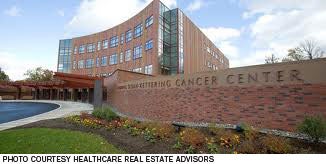Going off campus
 Facing economic uncertainty, hospitals are adopting a strategy of moving high-demand health care services such as urgent care, ambulatory care and primary care, to smaller community-based locations. Hospitals using this strategy generally find they can increase patient counts, build market share and improve visibility among prospective patients who receive a good experience.
Facing economic uncertainty, hospitals are adopting a strategy of moving high-demand health care services such as urgent care, ambulatory care and primary care, to smaller community-based locations. Hospitals using this strategy generally find they can increase patient counts, build market share and improve visibility among prospective patients who receive a good experience.
In a typical scenario, the off-campus facility can either be organized as a branch or affiliate of the hospital or leased by the hospital to doctors who operate the site as independent practitioners. In this case, it's likely that some portion of the facility, such as an urgent care center, may be branded and operated by the hospital. Other portions of the same building may be separate suites leased to independent medical practices with complementary skills.
Prime candidates
The Health Facilities Management/American Society for Healthcare Engineering 2012 Hospital Construction Survey questioned 531 health care executives on future off-campus projects in neighborhood settings. The types of facilities most frequently cited were outpatient facilities (16 percent), primary care clinics (14 percent) and urgent care clinics (14 percent).
These ambulatory-care facilities are prime candidates because they represent a low-cost, patient-friendly delivery mechanism. Orthopedic groups, obstetrics/gynecology groups and faculty practice groups are also excellent off-campus moves. In short, if the patient can come in, receive treatment and return home the same day, the practice should consider going off campus.
 |
| Memorial Sloan-Kettering main campus in New York City. |
Primary care is most amenable to an off-campus move because it is less technically demanding than other types of services. On the other hand, if a facility will have capital-intensive equipment and technology requirements, moving that facility off campus may not offer the same benefits.
In developing a facility plan, facilities managers need to consider the best ways to reach targeted prospective patients. They should plan for the hospital to build a reputation for a welcoming and warm atmosphere, keeping in mind demographics and travel patterns when locating the facility.
Positioning the facility is also important in reaching patients. Will the facility share the hospital's name or have a different name? How will the hospital affiliation be presented, if at all? Will the off-campus location be organized as a separate entity or simply as a branch of the hospital?
Facility size is dependent on the number of patients who will be served. Relatively large facilities may work very well in cases where anticipated demand and services to be offered indicate a need for more space. However, clinical spaces as small as 3,000 square feet, including four to five exam rooms and accommodating two doctors, can work very well for an off campus move.
Making the move
Moving off campus requires careful attention to detail for a successful outcome. The following are recommendations for facilities making the move.
First, in any off-campus move, facility managers should find the right space while allowing sufficient time for site searches, negotiating a new lease or possibly a purchase, that meets the facility's needs, and completing all needed financial analyses. Managers, moreover, need to be realistic about the need for reconfiguration and rehabilitation of the space to be occupied.
 |
| Sloan-Kettering's outpatient center in Basking Ridge, N.J. |
In connection with a lease, managers must negotiate to get funds for the needed build-out, making sure to provide adequate administrative offices, clinical areas and laboratory areas. Generally, they should not expect building ownership to fund the entire build-out. The funds that will be made available for the build-out will be a function of competition in the market, the length of the lease and alternatives available to building ownership.
During the build-out, facility managers should arrange for effective liaison with the building owner and managing agent and, at the same time, develop and execute a detailed plan to manage team members during construction.
To get the job rolling, the manager makes arrangements to choose, based on requests for proposals, a well-qualified architect and general contractor, and to negotiate all needed agreements and budgets. Challenges can include bringing utilities to the site and assuring that the landlord performs base-building and structural work agreed upon in a timely way.
As a part of this process, the manager should systematically look into the specific technical requirements of the function being moved off campus. It is important to assure that any building considered can meet the HVAC and electrical needs of the service the facility will provide, including the slab-to-slab height needed to accommodate needed HVAC flow.
If a lab is included, the manager needs to provide a location away from fumes and outside air conditions that could taint the lab environment. For instance, if the functions are particularly sensitive, the manager may need to specify HVAC with HEPA standard air filtration, and it may be necessary to choose a site upwind of highways, factories or any other potential contaminant.
Managers need to make sure that elevators, if required, are sufficient to meet the need. Another requirement is sufficient electrical capacity for day-to-day needs -- which may be substantially more than previous non-medical uses. Also, the facility may need or may benefit from an emergency generator and the cost of providing this at different locations under consideration.
Accessibility for people traveling to the facility from out of town is a must, including adequate parking.
These are just a few examples of the variables that must be included in the planning process and of the complex process of delivering a technically sound facility on time.
Complying with regulations
It also is necessary that new off-campus facilities comply with applicable regulations. At the same time, facilities managers should never allow themselves to get caught in the trap of over-complying. Building to hospital standards where those standards do not apply can cost hundreds of thousands of unnecessary dollars.
 |
| Sloan-Kettering's outpatient center in Rockville Centre, N.Y. |
Facilities managers who will be using certain types of sedation in an off-campus practice, even in low doses, may need to meet local or Joint Commission regulations or accreditation. These regulations may require restricted access, which can be done through a lockable airlock, an airtight door designed to equalize air or gas pressure but which can also restrict personnel access.
However, if sedation is not required the standard needed for the facility is often much less stringent and the buildout much simpler. Chances are it will resemble a pediatrician's office more than a hospital, enabling a less-costly build-out.
Off-campus moves are often executed by leasing space to the doctors who operate the facility. However, as a compliance consideration, it is important to determine whether the entity doing the leasing should be separate from the hospital or be the hospital itself.
Facilities managers need to be sure new facilities comply with the Stark Laws' provisions against special favors, special compensation or givebacks to doctors, particularly when space is being leased to doctors. To comply with the laws' provisions against conflict of interest, leasing transactions should be at market rates, not special rates that may be seen as favoritism to doctors.
The challenge for the administrative and operating staff is to make the transition appropriately and to comply with those standards, and only those, that apply.
Accelerating demand
As the pressure to control the cost of health care delivery accelerates, more facilities will move off campus, especially primary care and preventive care services. Contributing to the trend will be baby boomers' demand for more conveniently available services.
Accelerating demand for patient-friendly urgent care centers and other services will be a force in making those services more widely available in the community. Families will go to urgent care centers and will take children there because of their perception that they will receive quick, friendly, effective care at an affordable cost.
Hospitals must focus on creating a real estate platform that operates cost-effectively and is patient friendly. They must use tested project management methods and proceed correctly to assure off-campus strategies are successful. If these capabilities are not available in-house, it may be wise to consider working with a real estate professional knowledgeable about health care facility strategy and build-outs.
Marisa Manley is president of Healthcare Real Estate Advisors, New York City. She can be reached at mmanley@hcreadvisors.com.




